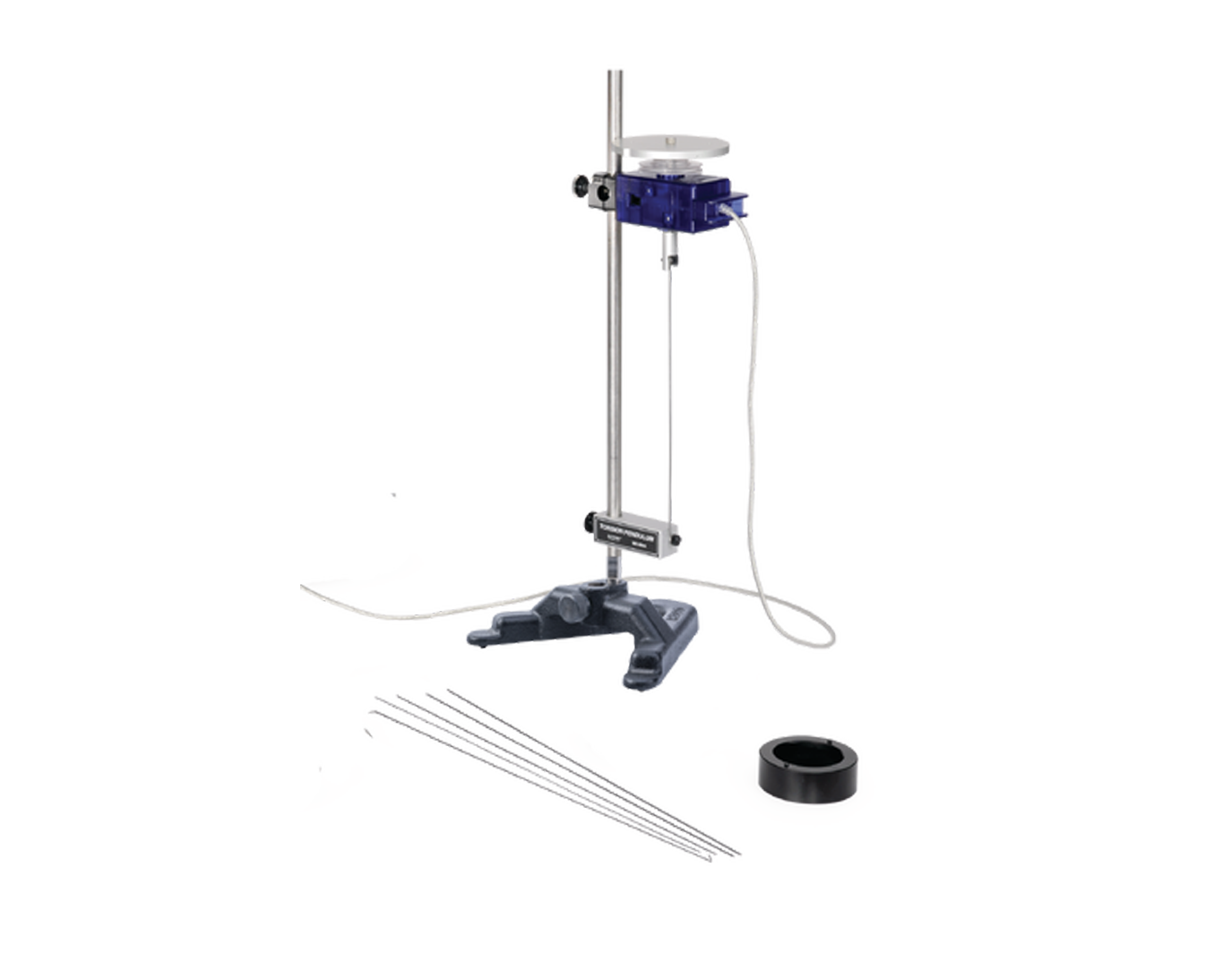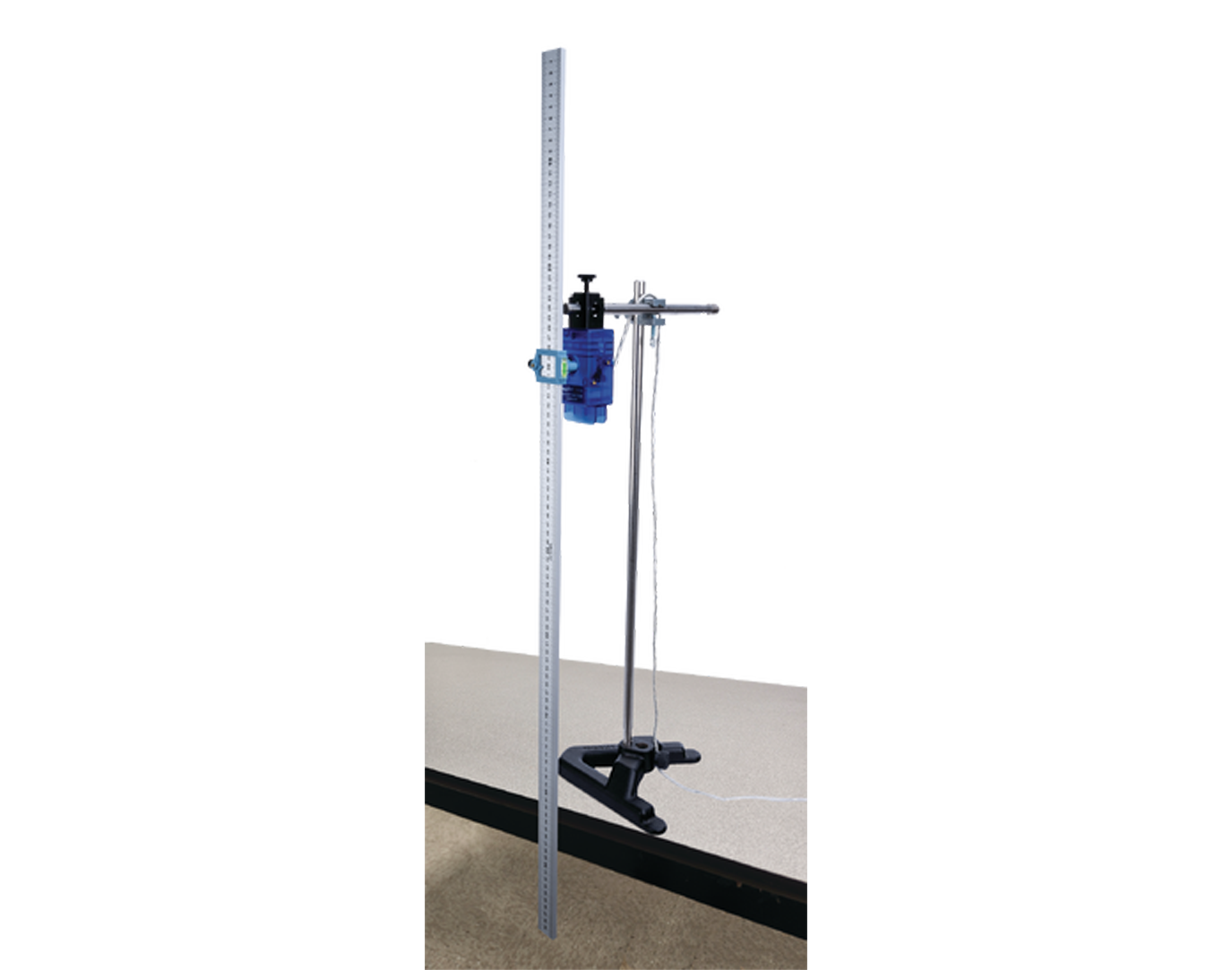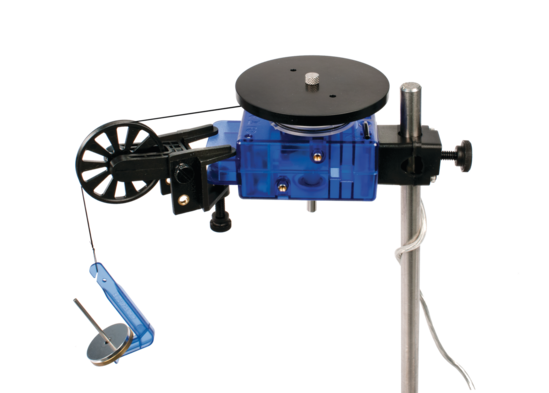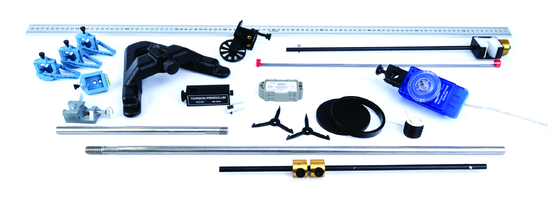Description
At the heart of this kit is the Rotary Motion Sensor combined with the Rotational Inertia Accessory which enable rotational motion experiments to be performed. Basic concepts covered by this kit include the rotational inertia of a ring, disk, and point mass, centripetal acceleration, torque and angular acceleration, and conservation of angular momentum.
More advanced concepts covered by this kit include rotational kinetic energy, period of a physical pendulum, and period of a large amplitude pendulum.
The included Torsion Pendulum Accessory and Rotational Inertia Accessory are used on the Rotary Motion Sensor to find the period of a torsional pendulum.
This kit also has a meter stick and Meter Stick Torque Pivot Clamp and Mass Hangers which expand the capabilities of this kit to include static equilibrium as well as finding the pivot point that gives the minimum period of a thin rod pendulum.
Perform These Experiments
- Centripetal Acceleration
- Torsional Pendulum
- Static Equilibrium
- Rotational Inertia of a Thin Rod
- Minimum Period of a Physical Pendulum
- Centripetal, Tangential, and Angular Acceleration
- Newton’s Second Law for Rotation
- Rotational Inertia
- Rotational Kinetic Energy
- Conservation of Angular Momentum
- Conservation of Energy of a Simple Pendulum
- Physical Pendulum
- Large Amplitude Pendulum
What’s Included
- 1x PASPORT Rotary Motion Sensor (PS-2120A)
- 1x Ring And Disk Set (ME-3419)
- 1x Torsional Pendulum (ME-6694)
- 1x Meter Stick Torque Mass Hanger Set (ME-7035)
- 1x Wireless Acceleration/Altimeter (PS-3223)
- 1x Super Pulley with Clamp (ME-9448B)
- 1x Small “A” Base (ME-8976)
- 1x Stainless Steel Rod, 60 cm Threaded (ME-8977)
- 1x Aluminum Meter Stick
- 1x Multi-Clamp (ME-9507)
- 1x Round Base with Rod (ME-8270)
- 1x Roll of Black Thread
Activities
01) Torsional Pendulum
The torsional pendulum consists of a torsion wire attached to a Rotary Motion Sensor with an object (a disk, a ring, or a rod with point masses) mounted on top of it. The period of oscillation is measured from a plot of the angular displacement versus time. To calculate the theoretical period, the rotational inertia is determined by measuring the dimensions of the object and the torsional spring constant is determined from the slope of a plot of force versus angular displacement.
02) Gravitational Torque
Students set up various systems to learn about gravitational torque and center of mass. They find the mass of an object, determine the mass of a meter stick, predict the location of a mass to balance an off-center meter stick, and locate the center of mass of an irregular object.
03) Exploring a Rotating System
Students construct and collect data with an experimental system to determine angular velocity, angular acceleration, applied torque, and the rotational inertia of the meter stick component.
04) Exploring Physical Pendulums
Students use a meter stick as a physical pendulum to explore the factors that affect the period and the mathematical properties of the physical pendulum period equation.
05) Centripetal, Tangential, and Angular Acceleration
A rod rotates in a horizontal plane, and is made to slow steadily to a stop. This setup is used to explore the different types of acceleration involved in this motion: centripetal, tangential, and angular acceleration.
06) Rotational Inertia
The purpose of this experiment is to find the rotational inertia of a ring and a disk experimentally and to verify that these values correspond to the calculated theoretical values.
07) Newton’s Second Law for Rotation
Newton’s Second Law for rotation: The resulting angular acceleration (α) of an object is directly proportional to the net torque (τ) on that object. The hanging mass applies a torque to the shaft of the Rotary Motion Sensor and the resulting angular acceleration of the rod and brass masses is investigated.
08) Rotational Kinetic Energy
This lab investigates the potential energies for a modified Atwood’s Machine, where a disk has been added to the Rotary Motion Sensor pulley.
09) Conservation of Angular Momentum
A non-rotating ring is dropped onto a rotating disk. The angular speed is measured immediately before the drop and after the ring stops sliding on the disk. The measurements are repeated with a non-rotating disk being dropped onto a rotating disk. For each situation, the initial angular momentum is compared to the final angular momentum. Initial and final kinetic energy are also calculated and compared.
10) Conservation of Energy of a Simple Pendulum
The purpose of this experiment is to use measurements of the motion of a simple pendulum to calculate and compare the different types of energy present in the system.
11) Physical Pendulum
A rod oscillates as a physical pendulum. The period is measured directly by the Rotary Motion Sensor, and the value is compared to the theoretical period calculated from the dimensions of the pendulum.
12) Large Amplitude Pendulum
This experiment explores the oscillatory motion of a physical pendulum for both small and large amplitudes. Waveforms are examined for angular displacement, velocity and acceleration, and the dependence of the period of a pendulum on the amplitude of oscillation is investigated.




